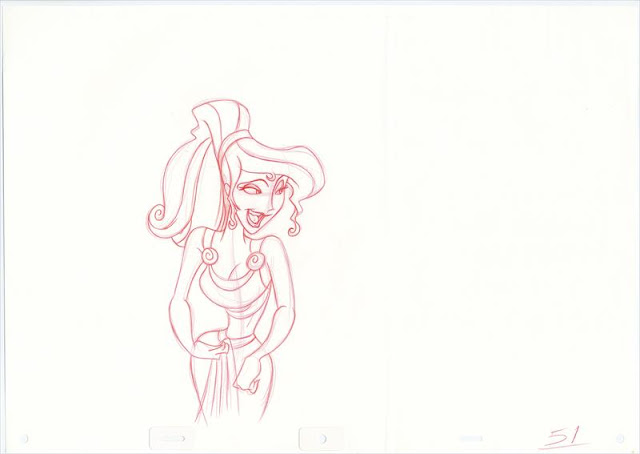WALT DISNEY STUDIO
Snow White and the Seven Dwarfs (circa 1937)
animation model sheet
photostat on paper, dimensions: 11" x 14" + 1" strip at left
Snow White and the Seven Dwarfs (circa 1937)
animation model sheet
photostat on paper, dimensions: 11" x 14" + 1" strip at left
Since the early 1930s the Disney Studio has produced model sheets of its animated characters and/or atmosphere and concept art for circulation among artists and animators working in production of an animated film. Before the 1970s they were reproduced by a photostatic or printing process. They were made when a character or setting was in development and to help animators maintain a consistent look to the character throughout the film.
This photostat model sheet titled "Production F1 'Snow White' Prince Models" at center was made at the Disney Studio, likely soon after production of Snow White and the Seven Dwarfs. It is a second-generation print, made from a photostat for reference and future use; a strip of two punch holes was added at left, and it was kept in a studio binder. "Library of the Walt Disney Studio" is reproduced in the model sheet at right. All three notes refer to the rotoscope process by which the studio used its live-action film of an actor as the Prince for reference in animating the character.


















































